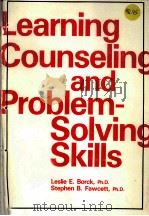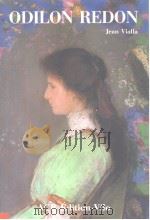《DATA STRUCTURES AND PROBLEM SOLVING USING JAVA》
| 作者 | 编者 |
|---|---|
| 出版 | ADDISON-WESLEY |
| 参考页数 | 780 |
| 出版时间 | 1998(求助前请核对) 目录预览 |
| ISBN号 | 0201549913 — 求助条款 |
| PDF编号 | 812860848(仅供预览,未存储实际文件) |
| 求助格式 | 扫描PDF(若分多册发行,每次仅能受理1册) |

Part Ⅰ:Tour of Java3
CHAPTER1 Primitive Java3
1.1 The General Environment4
1.2The First Program5
1.2.1 Comments5
1.2.2 main6
1.2.3 Terminal Output6
1.3Primitive Types6
1.3.1 The Primitive Types6
1.3.2 Constants7
1.3.3 Declaration and Initialization of Primitive Types7
1.3.4 Terminal Input and Output8
1.4Basic Operators8
1.4.1 Assignment Operators9
1.4.2 Binary Arithmetic Operators10
1.4.3 Unary Operators10
1.4.4 Type Conversions10
1.5Conditional Statements11
1.5.1 Relational and Equality Operators11
1.5.2 Logical Operators12
1.5.3 The i f Statement13
1.5.4 The while Statement14
1.5.5 The for Statement14
1.5.6 The do Statement15
1.5.7 break and continue16
1.5.8 The switch Statement17
1.5.9 The Conditional Operator17
1.6Methods18
1.6.1 Overloading of Method Names19
1.6.2 Storage Classes20
Summary20
Objects of the Game20
Common Errors22
On the Internet23
Exercises23
References25
CHAPTER 2References27
2.1 What Is a Reference?27
2.2Basics of Objects and References29
2.2.1 The Dot Operator (.)30
2.2.2 Declaration of Objects30
2.2.3 Garbage Collection31
2.2.4 The Meaning of =31
2.2.5 Parameter Passing32
2.2.6 The Meaning of ==33
2.2.7 Operator Overloading for Objects33
2.3Strings33
2.3.1 Basics of String Manipulation34
2.3.2 String Concatenation34
2.3.3 Comparing Strings35
2.3.4 Other String Methods35
2.3.5 Converting between Strings and Primitive Types35
2.4Arrays36
2.4.1 Declaration,Assignment,and Methods36
2.4.2 Dynamic Array Expansion39
2.4.3 Multidimensional Arrays41
2.4.4 Command-line Arguments41
2.5Exception Handling42
2.5.1 Processing Exceptions42
2.5.2 The finally Clause43
2.5.3 Common Exceptions43
2.5.4 The throw and throws Clauses44
2.6Input and Output45
2.6.1 Basic Stream Operations46
2.6.2 The StringTokenizer Object46
2.6.3 Sequential Files47
Summary49
Objects of the Game49
Common Errors51
On the Internet51
Exercises51
References52
CHAPTER 3Objects and Classes53
3.1 What Is Object-oriented Programming?53
3.2 A Simple Example55
3.3 Javadoc57
3.4Basic Methods58
3.4.1 Constructors58
3.4.2 Mutators and Accessors60
3.4.3 Output and toString60
3.4.4 equals62
3.4.5 static Methods62
3.4.6 main62
3.5Packages62
3.5.1 The import Directive63
3.5.2 The package Statement64
3.5.3 The CLASSPATH Environment Variable65
3.5.4 Package-friendly Visibility Rules66
3.5.5 Separate Compilation66
3.6Additional Constructs66
3.6.1 The this Reference66
3.6.2 The this Shorthand for Constructors67
3.6.3 The instanceof Operator68
3.6.4 Static Fields68
3.6.5 Static Initializers69
Summary70
Objects of the Game70
Common Errors71
On the Internet72
Exercises72
References74
CHAPTER 4Inheritance75
4.1 What Is Inheritance?75
4.2Basic Java Syntax78
4.2.1 Visibility Rules79
4.2.2 The Constructor and super79
4.2.3 final Methods and Classes80
4.2.4 Overriding a Method81
4.2.5 Abstract Methods and Classes82
4.3Example:Expanding the Shape Class84
4.3.1 Digression:An Introduction to Sorting86
4.4 Multiple Inheritance90
4.5The Interface90
4.5.1 Specifying an Interface91
4.5.2 Implementing an Interface91
4.5.3 Multiple Interfaces94
4.6 Implementing Generic Components94
Summary97
Objects of the Game98
Common Errors99
On the Internet100
Exercises100
References102
Part Ⅱ:Algorithms and Building Blocks107
CHAPTER 5Algorithm Analysis107
5.1 What Is Algorithm Analysis?107
5.2 Examples of Algorithm Running Times111
5.3The Maximum Contiguous Subsequence Sum Problem113
5.3.1 The Obvious O(N3) Algorithm114
5.3.2 An Improved O(N2) Algorithm117
5.3.3 A Linear Algorithm118
5.4 General Big-Oh Rules121
5.5 The Logarithm124
5.6Static Searching Problem127
5.6.1 Sequential Search127
5.6.2 Binary Search128
5.6.3 Interpolation Search129
5.7 Checking an Algorithm Analysis131
5.8 Limitations of Big-Oh Analysis133
Summary133
Objects of the Game134
Common Errors134
On the Internet135
Exercises135
References139
CHAPTER 6Data Structures143
6.1 Why Do We Need Data Structures?143
6.2Stacks145
6.2.1 Stacks and Computer Languages147
6.3 Queues148
6.4 Linked Lists150
6.5 General Trees155
6.6 Binary Search Trees157
6.7 Hash Tables161
6.8 Priority Queues163
Summary166
Objects of the Game167
Common Errors168
On the Internet168
Exercises169
References172
CHAPTER 7Recursion173
7.1 What Is Recursion?173
7.2 Background:Proofs by Mathematical Induction174
7.3Basic Recursion177
7.3.1 Printing Numbers in Any Base179
7.3.2 Why It Works180
7.3.3 How It Works182
7.3.4 Too Much Recursion Can Be Dangerous183
7.3.5 Additional Examples185
7.4Numerical Applications189
7.4.1 Modular Arithmetic190
7.4.2 Modular Exponentiation190
7.4.3 Greatest Common Divisor and Multiplicative Inverses192
7.4.4 The RSA Cryptosystem194
7.5Divide-and-Conquer Algorithms197
7.5.1 The Maximum Contiguous Subsequence Sum Problem197
7.5.2 Analysis of a Basic Divide-and-Conquer Recurrence199
7.5.3 A General Upper Bound for Divide-and-Conquer Running Times204
7.6 Dynamic Programming207
7.7 Backtracking Algorithms211
Summary214
Objects of the Game215
Common Errors217
On the Internet217
Exercises218
References221
CHAPTER 8Sorting Algorithms223
8.1 Why Is Sorting Important?223
8.2 Preliminaries225
8.3 Analysis of the Insertion Sort and Other Simple Sorts225
8.4Shellsort227
8.4.1 Performance of Shellsort229
8.5Mergesort231
8.5.1 Linear-time Merging of Sorted Arrays231
8.5.2 The Mergesort Algorithm234
8.6Quicksort235
8.6.1 The Quicksort Algorithm235
8.6.2 Analysis of Quicksort236
8.6.3 Picking the Pivot240
8.6.4 A Partitioning Strategy241
8.6.5 Keys Equal to the Pivot244
8.6.6 Median-of-three Partitioning244
8.6.7 Small Arrays245
8.6.8 Java Quicksort Routine246
8.7 Quickselect248
8.8 A Lower Bound for Sorting250
Summary251
Objects of the Game251
Common Errors252
On the Internet252
Exercises253
References256
CHAPTER 9Randomization259
9.1 Why Do We Need Random Numbers?259
9.2 Random-number Generators260
9.3 Nonuniform Random Numbers265
9.4 Generating a Random Permutation268
9.5 Randomized Algorithms269
9.6 Randomized Primality Testing271
Summary275
Objects of the Game275
Common Errors276
On the Internet277
Exercises277
References279
Part Ⅲ:Applications283
CHAPTER10 Fun and Games283
10.1 Word Search Puzzles283
10.1.1Theory283
10.1.2 Java Implementation288
10.2 The Game of Tic-Tac-Toe292
10.2.1Alpha-beta Pruning292
10.2.2 Transposition Tables293
10.2.3 Computer Chess298
Summary299
Objects of the Game299
Common Errors300
On the Internet300
Exercises300
References302
CHAPTER 11Stacks and Compilers303
11.1 Balanced-symbol Checker303
11.1.1Basic Algorithm303
11.1.2 Implementation306
11.2 A Simple Calculator313
11.2.1Postfix Machines314
11.2.2 Infix to Postfix Conversion316
11.2.3 Implementation318
11.2.4 Expression Trees326
Summary327
Objects of the Game327
Common Errors328
On the Internet328
Exercises329
References330
CHAPTER 12Utilities331
12.1 File Compression331
12.1.1Prefix Codes332
12.1.2 Huffman’s Algorithm334
12.1.3 The Encoding Phase337
12.1.4 Decoding Phase337
12.1.5 Practical Considerations338
12.2 A Cross-reference Generator338
12.2.1Basic Ideas339
12.2.2 Java Implementation339
Summary343
Objects of the Game345
Common Errors345
On the Internet345
Exercises345
References348
CHAPTER13 Simulation349
13.1 The Josephus Problem349
13.1.1The Simple Solution350
13.1.2 A More Efficient Algorithm352
13.2 Event-driven Simulation354
13.2.1Basic Ideas354
13.2.2 Example:A Modem Bank Simulation356
Summary363
Objects of the Game363
Common Errors364
On the Internet364
Exercises364
CHAPTER14 Graphs and Paths367
14.1 Definitions367
14.1.1Representation369
14.2 Unweighted Shortest-path Problem379
14.2.1Theory382
14.2.2 Java Implementation386
14.3 Positive-weighted,Shortest-path Problem387
14.3.1Theory:Dijkstra’s Algorithm387
14.3.2 Java Implementation390
14.4 Negative-weighted,Shortest-path Problem393
14.4.1Theory393
14.4.2 Java Implementation395
14.5 Path Problems in Acyclic Graphs395
14.5.1Topological Sorting396
14.5.2 Theory of the Acyclic Shortest-path Algorithm398
14.5.3 Java Implementation399
14.5.4 An Application:Critical-path Analysis399
Summary403
Objects of the Game403
Common Errors405
On the Internet405
Exercises405
References408
Part Ⅳ:Implementations411
CHAPTER15 Stacks and Queues411
15.1 Dynamic Array Implementations411
15.1.1Stacks411
15.1.2 Queues416
15.2 Linked-list Implementations421
15.2.1Stacks422
15.2.2 Queues426
15.3 Comparison of the Two Methods428
15.4 Double-ended Queues428
Summary429
Objects of the Game430
Common Errors430
On the Internet430
Exercises430
CHAPTER16 Linked Lists433
16.1 Basic Ideas433
16.1.1Header Nodes435
16.1.2 Iterator Classes436
16.2 Java Implementation437
16.3 Doubly Linked Lists and Circular Linked Lists445
16.4 Sorted Linked Lists447
Summary450
Objects of the Game450
Common Errors450
On the Internet451
Exercises451
CHAPTER 17Trees455
17.1 General Trees455
17.1.1Definitions455
17.1.2 Implementation457
17.1.3 An Application:File Systems459
17.2 Binary Trees463
17.3 Recursion and Trees468
17.4 Tree Traversal:Iterator Classes471
17.4.1Postorder Traversal474
17.4.2 Inorder Traversal477
17.4.3 Preorder Traversal477
17.4.4 Level-order Traversals481
Summary483
Objects of the Game483
Common Errors484
On the Internet484
Exercises485
CHAPTER 18Binary Search Trees489
18.1 Basic Ideas489
18.1.1The Operations490
18.1.2 Java Implementation494
18.2 Order Statistics500
18.2.1Java Implementation500
18.3 Analysis of Binary Search Tree Operations504
18.4 AVL Trees508
18.4.1Properties509
18.4.2 Single Rotation511
18.4.3 Double Rotation512
18.4.4 Summary of AVL Insertion515
18.5 Red-Black Trees517
18.5.1Bottom-up Insertion518
18.5.2 Top-down Red-Black Trees520
18.5.3 Java Implementation522
18.5.4 Top-down Deletion526
18.6 AA-Trees530
18.6.1Insertion532
18.6.2 Deletion536
18.6.3 Java Implementation537
18.7 B-Trees540
Summary545
Objects of the Game546
Common Errors547
On the Internet547
Exercises548
References550
CHAPTER19 Hash Tables553
19.1 Basic Ideas553
19.2 Hash Function554
19.3 Linear Probing557
19.3.1Naive Analysis of Linear Probing558
19.3.2 What Really Happens:Primary Clustering560
19.3.3 Analysis of the f ind Operation560
19.4 Quadratic Probing562
19.4.1Java Implementation568
19.4.2 Analysis of Quadratic Probing572
19.5 Separate Chaining Hashing573
Summary573
Objects of the Game575
Common Errors575
On the Internet576
Exercises576
References578
CHAPTER 20A Priority Queue:The Binary Heap581
20.1 Basic Ideas581
20.1.1Structure Property582
20.1.2 Heap-order Property584
20.1.3 Allowed Operations584
20.2 Implementation of the Basic Operations588
20.2.1insert588
20.2.2 deleteMin591
20.3 fixHeap:Linear Time Heap Construction593
20.4 Advanced Operations:decreasekey and merge598
20.5 Internal Sorting:Heapsort598
20.6 External Sorting601
20.6.1Why We Need New Algorithms601
20.6.2 Model for External Sorting602
20.6.3 The Simple Algorithm602
20.6.4 Multiway Merge604
20.6.5 Polyphase Merge604
20.6.6 Replacement Selection607
Summary608
Objects of the Game608
Common Errors609
On the Internet610
Exercises610
References612
Part Ⅴ:Advanced Data Structures617
CHAPTER 21Splay Trees617
21.1 Self-adjustment and Amortized Analysis617
21.1.1Amortized Time Bounds618
21.1.2 A Simple Self-adjusting Strategy (That Does Not Work)619
21.2 The Basic Bottom-up Splay Tree621
21.3 Basic Splay Tree Operations623
21.4 Analysis of Bottom-up Splaying624
21.4.1Proof of the Splaying Bound627
21.5 Top-down Splay Trees630
21.6 Implementation of Top-down Splay Trees633
21.7 Comparison of the Splay Tree with Other Search Trees636
Summary640
Objects of the Game640
Common Errors640
On the Internet641
Exercises641
References642
CHAPTER 22Merging Priority Queues643
22.1 The Skew Heap643
22.1.1Merging Is Fundamental643
22.1.2 Simplistic Merging of Heap-ordered Trees644
22.1.3 The Skew Heap:A Simple Modification645
22.1.4 Analysis of the Skew Heap646
22.2 The Pairing Heap648
22.2.1Pairing Heap Operations and Theory649
22.2.2 Implementation of the Pairing Heap651
22.2.3 Application:Dijkstra’s Shortest Weighted Path Algorithm660
Summary660
Objects of the Game661
Common Errors661
On the Internet661
Exercises661
References662
CHAPTER 23The Disjoint Set Class665
23.1 Equivalence Relations665
23.2 Dynamic Equivalence and Two Applications666
23.2.1Application #1:Minimum Spanning Trees667
23.2.2 Application #2:The Nearest Common Ancestor Problem669
23.3 The Quick-find Algorithm672
23.4 The Quick-union Algorithm674
23.4.1Smart Union Algorithms676
23.4.2 Path Compression677
23.5 Java Implementation679
23.6 Worst Case for Union-by-rank and Path Compression681
23.6.1Analysis of the Union/Find Algorithm682
Summary689
Objects of the Game689
Common Error690
On the Internet690
Exercises690
References692
APPENDICES697
APPENDIXAJava Platforms697
A.1Setting the Environment697
A.1.1 Unix Instructions698
A.1.2 Windows 95/NT Instructions699
A.2 Sun’s JDK700
A.3 Visual Development Environments700
A.3.1Symantec Cafe701
A.3.2 Microsoft Visual J++707
APPENDIX B Operators713
APPENDIX CSome Library Routines715
C.1Classes in Package java.lang715
C.1.1 Character715
C.1.2 Integer716
C.1.3 Object717
C.1.4 String718
C.1.5 StringBuffer719
C.1.6 System721
C.1.7 Thread723
C.1.8 Throwable723
C.2 Classes in Package java.io724
C.2.1BufferedReader724
C.2.2 File725
C.2.3 FileReader726
C.2.4 InputStreamReader726
C.2.5 PushbackReader727
C.3Classes in Package java.util727
C.3.1 Random728
C.3.2 StringTokenizer728
C.3.3 Vector730
On the Internet730
APPENDIXDGraphical User Interfaces731
D.1 The Abstract Window Toolkit731
D.2 Basic Objects in the AWT732
D.2.1Component733
D.2.2 Container734
D.2.3 Top-level Windows734
D.2.4 Panel736
D.2.5 Important I/O Components736
D.3 Basic AWT Principles741
D.3.1Layout Managers741
D.3.2 Graphics745
D.3.3 Events747
D.3.4 Summary:Putting the Pieces Together750
D.4 Animations and Threads750
D.5 Applets753
D.5.1Hypertext Markup Language753
D.5.2 Parameters756
D.5.3 Applet Limitations756
D.5.4 Making an Application an Applet758
D.5.5 Applets with Animation760
Summary762
Objects of the Game762
Common Errors764
On the Internet765
Exercises766
Reference768
Index769
1998《DATA STRUCTURES AND PROBLEM SOLVING USING JAVA》由于是年代较久的资料都绝版了,几乎不可能购买到实物。如果大家为了学习确实需要,可向博主求助其电子版PDF文件(由 1998 ADDISON-WESLEY 出版的版本) 。对合法合规的求助,我会当即受理并将下载地址发送给你。
高度相关资料
-

- DATA STRUCTURES & OTHER OBJECS USING C++
- 1997 ADDISON WESLEY
-

- Problem-solving and artificial intelligence
- 1990 Prentice Hall
-
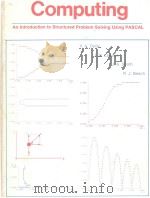
- COMPUTING AN INTRODUCTION TO STRUCTURED PROBLEM SOLVING USING PASCAL
- 1982 RESTON PUBLISHING COMPANY
-

- PROGRAMMING CONCEPTS AND PROBLEM SOLVING
- 1983 THE BENJAMIN/CUMMINGS PUBLISHING COMPANY
-
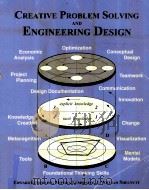
- CREATIVE PROBLEM SOLVING AND ENGINEERING DESIGN
- 1999 MCGRAW-HILL COLLEGE CUSTOM SERIES
-

- PROBLEM SOLVING
- 1997 ACADEMIC PRESS
-
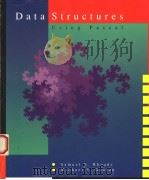
- DATA STRUCTURES USING PASCAL
- 1992 WM.C.BROWN PUBLISHERS
-
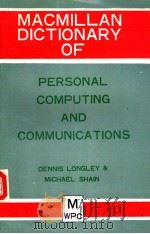
- MACMILLAN DECTIONARY OF PERSONAL COMPUTING AND COMMUNICATIONS
- 1986 MACMILLAN WORLD PUBLISHING CORP
-
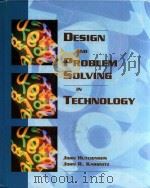
- Design and problem solving in technology
- 1994 DESPRSO
-
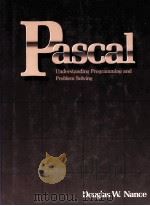
- PASCAL:UNDERSTANDING PROGRAMMING AND PROBLEM SOLVING
- WEST PUBLISHING COMPANY
提示:百度云已更名为百度网盘(百度盘),天翼云盘、微盘下载地址……暂未提供。➥ PDF文字可复制化或转WORD



